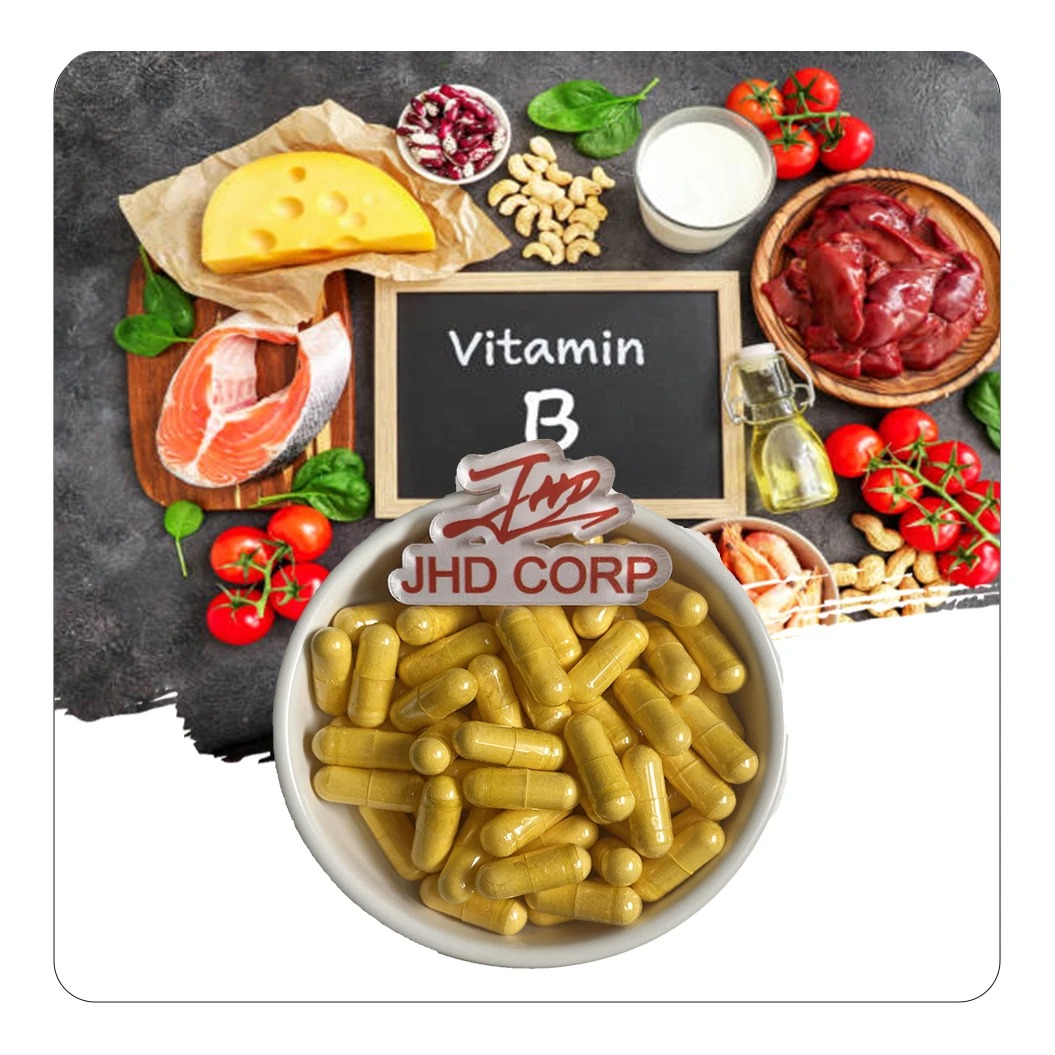Welcome to JHD Nutrasource!
Shop
Riboflavin Vitamin B2 Powder
Riboflavin Vitamin B2 Powder is a yellow-orange crystalline powder with a slight odor. It has poor solubility in water but is soluble in dilute alkalies. Chemically, riboflavin contains a dimethylisoalloxazine ring structure, which is responsible for its characteristic yellow color and its role as a coenzyme. This vitamin is essential for various metabolic processes in the body and is obtained through the diet or dietary supplements.
| Product Name | Riboflavin Vitamin B2 Powder |
| Appearance | Yellow to Orange Powder |
| Specification | 1%-98% |
| Test Method | HPLC UV |
| CAS No | 83-88-5 |
| MF | C17H20N4O6 |
| Certificate | ISO/cGMP/KOSHER/HALAL/USDA ORGANIC |
Description
Functions
Coenzyme Formation: Riboflavin forms two important coenzymes, flavin mononucleotide (FMN) and flavin adenine dinucleotide (FAD). These coenzymes are essential for numerous redox reactions in the body, which involve the transfer of electrons. FMN and FAD act as electron carriers, participating in reactions such as the breakdown of carbohydrates, fats, and proteins to produce energy.
Energy Metabolism:As coenzymes, FMN and FAD play a crucial role in energy metabolism. They are involved in the citric acid cycle, also known as the Krebs cycle, which is the central pathway for generating energy in the form of ATP. By facilitating the transfer of electrons in this cycle, riboflavin helps to convert nutrients into usable energy for the body’s cells.
Ocular Health:Riboflavin is important for maintaining the integrity of the cornea and retina. It helps to protect the eyes from oxidative damage and is involved in the production of visual pigments. Adequate riboflavin intake is essential for good vision and may help to prevent certain eye diseases, such as cataracts and age-related macular degeneration.
Antioxidant Activity: Although not a traditional antioxidant like vitamin C or E, riboflavin can participate in antioxidant defense mechanisms. It can help to regenerate other antioxidants, such as glutathione, which is important for protecting cells from oxidative stress. By reducing oxidative damage, riboflavin may contribute to overall health and reduce the risk of chronic diseases.
Growth and Development:Riboflavin is necessary for normal growth and development, especially in children. It is involved in the synthesis of DNA and RNA, which are the genetic material of cells. Adequate riboflavin intake is important for proper cell division and growth, as well as for the development of tissues and organs.
Applications
Food Industry: In the food industry, riboflavin is used as a nutritional fortifier to increase the vitamin content of foods. It is added to cereals, bread, pasta, and other processed foods to help meet the daily recommended intake of vitamin B2. Additionally, riboflavin is used as a natural yellow food coloring (E101), giving foods a bright yellow color without the use of artificial dyes.
Pharmaceuticals: In pharmaceuticals, riboflavin is used to treat riboflavin deficiency, also known as ariboflavinosis. This condition can cause symptoms such as sore throat, cracked lips, dermatitis, and anemia. Riboflavin is included in multivitamin supplements and is also used in combination with other vitamins and minerals to treat various health conditions.
Feed Additives:Riboflavin is added to animal feed to promote growth and improve the health of livestock and poultry. It is essential for the proper development of animals and helps to prevent riboflavin deficiency, which can lead to poor growth, reduced egg production, and other health problems.
Research and Development: Riboflavin is also used in research and development applications. It is used as a fluorescent marker in biological studies, allowing researchers to track the movement and distribution of molecules within cells. Additionally, riboflavin derivatives are being studied for their potential use in photodynamic therapy, a treatment for cancer and other diseases that uses light to activate a photosensitizer.

